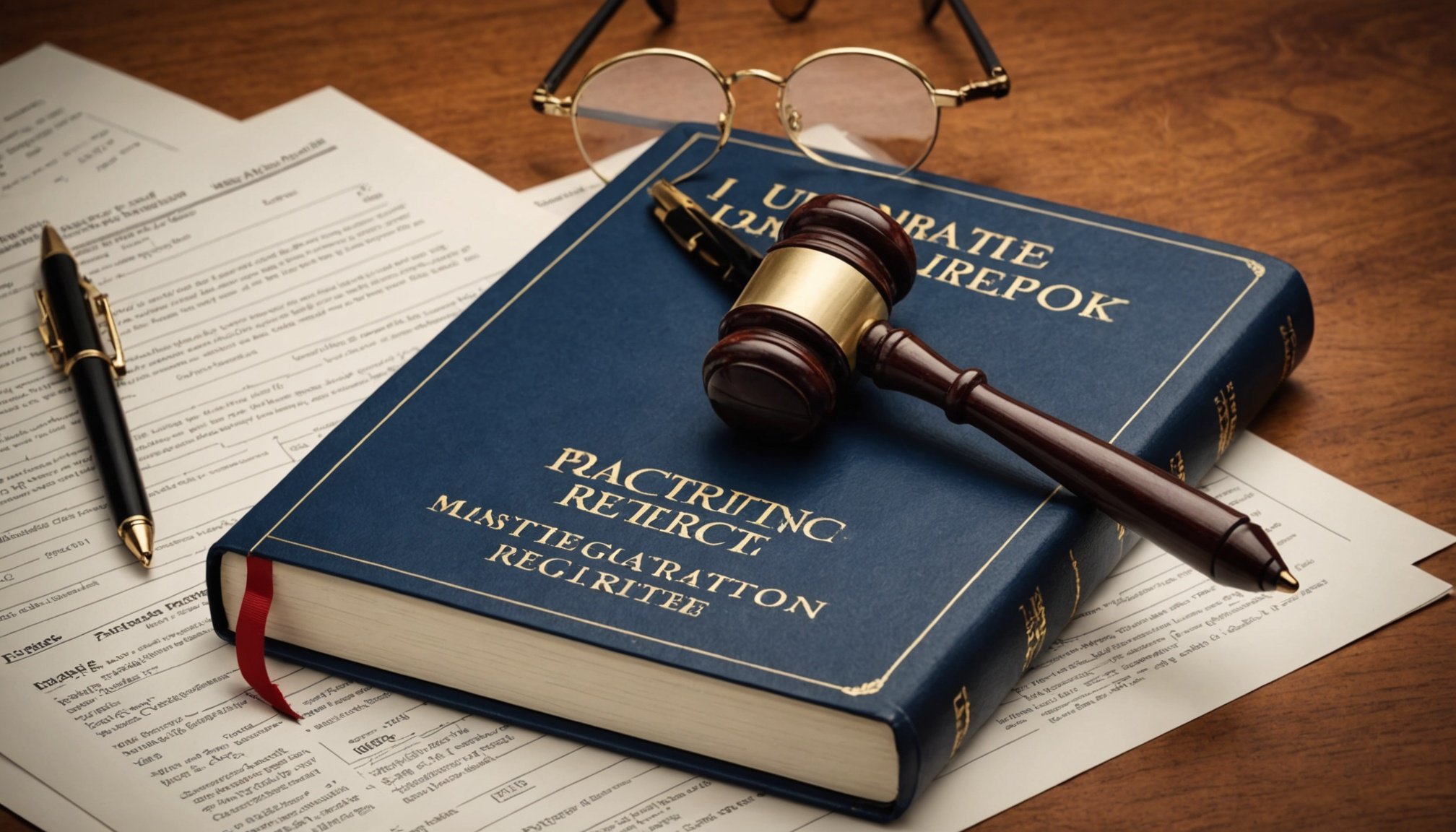Overview of Global Patent Registration Strategies
Understanding global patent registration is crucial for UK enterprises seeking to protect their innovations internationally. With diverse markets come distinct patent strategies tailored to national and regional laws. UK enterprises aiming for global reach must navigate this complex landscape effectively to safeguard and leverage their intellectual property.
The importance of global patent registration hinges on the ability to prevent unauthorised use of innovations and create barriers against competitors in international markets. For UK businesses, expanding their patent portfolio beyond national borders can significantly enhance their competitive edge and potential revenue streams.
Different countries have varied patent laws, affecting how patents are filed, processed, and enforced. In the US, for instance, the patent system prioritises “first to file,” whereas some other countries might have unique stipulations or procedural nuances. Understanding these variations is critical, as failure to properly register patents internationally can result in lost protection and potential financial penalties.
Several factors influence patent strategies decisions, including the target market’s economic stability, compatibility with UK enterprise objectives, and the costs associated with maintaining patents in multiple jurisdictions. UK enterprises must weigh these factors carefully, aligning their strategy with both current and future business plans, to ensure comprehensive protection and competitive advantage in the global marketplace.
This might interest you : Key legal responsibilities of uk enterprises under the consumer protection act 1987
Understanding International Patent Laws
Navigating the world of international patent laws can be complex, given the diverse global legal frameworks that exist. Central to this understanding are major international patent treaties, such as the Patent Cooperation Treaty (PCT) and the Paris Convention. The PCT streamlines the process of filing patents across multiple countries, allowing inventors to seek protection in over 150 member states with a single application. This treaty does not grant patents but facilitates simultaneous applications in participating countries.
The Paris Convention, one of the oldest international agreements, provides for the protection of industrial property in approximately 177 countries. It establishes the principle of “priority rights,” allowing an inventor to file an application in any member country within one year and still retain the original filing date.
Despite these treaties, international patent laws still vary significantly across jurisdictions. For instance, software patents might be permissible in the United States but could face restrictions in Europe. This divergence requires inventors to navigate the unique requirements of national patent offices. These offices play a crucial role in verifying applications and granting patents in line with local laws.
Understanding these differences and the role of these treaties aids inventors in effectively protecting their innovations globally, ensuring compliance with each jurisdiction’s rules and regulations.
Step-by-Step Patent Registration Process
Registering a patent can seem daunting, but understanding the process can simplify it.
Pre-Registration Considerations
Before diving into the patent registration process, focus on pre-registration considerations. A crucial step is conducting a prior art search, as it ensures your invention is unique. This involves scouring existing patents and scientific literature to determine whether your idea has already been patented. Successful inventors save time and resources by identifying potential roadblocks early on.
Completing the Application
Once you’ve confirmed the novelty of your invention, it’s time to move on to completing the application. A detailed patent application should clearly describe the invention, including its components and functionality. Diagrams can be incredibly useful here, providing visual clarity that complements written descriptions. Furthermore, avoid ambiguity—specifics help avoid misunderstandings, aiding in a smoother filing process.
Responding to Office Actions
After submission, expect office actions requiring responses. Timely and precise management of these communications with patent offices is critical. Addressing any issues raised promptly will keep the process moving forward efficiently. This stage demands patience and attention to detail, reinforcing the importance of being thoroughly prepared throughout the step-by-step guide. Understanding these key stages assists greatly in navigating patent registration with confidence.
Practical Tips for Successful Patent Applications
Navigating a patent application can be tricky, but there are key strategies to enhance success. By implementing best practices, you can streamline the process. Start by identifying common pitfalls. Avoid vague descriptions, as they can result in rejections. Ensure your invention is novel and not obvious.
Timing is crucial. Determine the optimal time to file by assessing your development stage. Filing too early might mean missing crucial features, while delays could risk someone beating you to it. Stay informed about application deadlines and maintain a timeline to manage these pressures effectively.
Access to the right resources and tools can make a significant difference. Patent offices offer guides that demystify the application process. Additionally, consider online databases that can assist in patent searches, ensuring your invention’s uniqueness. Consulting with patent attorneys or experts can provide valuable insights and decrease potential errors.
Successful patent strategies require diligence and preparation. Monitor competitor filings and industry trends, as they can influence your strategy. A holistic approach can improve your application’s chances, ensuring protection for your innovations.
Case Studies of UK Enterprises
Exploring real-world examples of successful patent registrations can provide invaluable insights into effective patent strategies. In the UK, various enterprises have leveraged patents to cement their market positions. For instance, Dyson has been a torch-bearer with its innovative vacuum technologies. Their patent case studies reveal the importance of securing intellectual property early in the development process.
Conversely, some UK enterprises have faced challenges with patents. Lessons from these unsuccessful applications often highlight the necessity of detailed documentation and clear product differentiation. Focusing on thorough patent searches and claims alignment can prevent these pitfalls.
Furthermore, industry-specific insights bring a unique perspective to patent strategies. UK enterprise examples in the pharmaceutical sector, for instance, illustrate the need for comprehensive research and timely filings due to the highly competitive environment. Technology firms, meanwhile, benefit from rapid prototype iterations and discerning successful patent strategies to balance innovation with protection.
Understanding such case studies helps in not merely appreciating the importance of patents but also in executing strategies that consider industry nuances and potential stumbling blocks. These lessons are critical for any company aiming to utilise patents as a strategic asset.
Navigating Common Challenges in Global Patent Registration
Embarking on the journey of patent registration can often resemble navigating through a labyrinth, particularly for UK enterprises venturing into international markets. The landscape is riddled with patent challenges, posing significant issues in patent registration that require astute problem-solving strategies. These challenges can range from understanding different jurisdictions’ laws to managing the nuances of patent eligibility.
One of the key challenges is the disparity in patent laws across different countries. Each region has its unique set of rules and regulations, which can be daunting for enterprises unfamiliar with the landscape. Furthermore, procedural hurdles such as documentation discrepancies and language barriers can further complicate the process. These challenges necessitate a meticulous approach to ensure compliance and protect innovations.
Strategies to overcome these obstacles often involve securing the guidance of experienced legal counsel. Such professionals provide crucial insight and advice, ensuring the navigation of complex legal frameworks is both efficient and thorough. Legal experts not only assist in drafting and filing patents correctly but also offer valuable strategies tailored to each jurisdiction, boosting the chances of successful registration. Emphasising the importance of expert advice cannot be understated, as it demystifies the process and increases strategic agility in managing patent portfolios globally.
Resources and Tools for Patent Registration
Navigating the world of patent registration can be daunting, but there are patent resources available to help streamline the process. When it comes to preparing a patent application, having access to essential legal templates is crucial. These templates ensure that all necessary information is presented accurately and can include formats for specifications, claims, and drawings. Utilizing these documents can significantly reduce errors in the initial submission.
Additionally, checklists play a vital role in effective patent registration. They help applicants track crucial steps, from conducting a thorough patent search to confirming that the invention meets patentability criteria. A comprehensive checklist can serve as a practical guide to ensure that all procedural requirements are met before filing.
For those seeking further assistance, connecting with relevant legal bodies and organizations is advisable. Institutions such as the World Intellectual Property Organization (WIPO) and national patent offices offer valuable support and guidance. They provide resources like FAQs and detailed procedural documents to aid applicants.
Leveraging these tools and resources not only simplifies the registration process but also enhances the likelihood of a successful patent grant.
Expert Perspectives on Patent Strategies
Expert perspectives on patent strategies provide essential insights for enterprises aiming to strengthen intellectual property portfolios.
Insights from Patent Attorneys
Patent attorneys offer a wealth of knowledge on the complexities of patent registration. They highlight that the right patent strategy is crucial for protecting innovations. One critical consideration is understanding jurisdictional differences that can impact patent filings and enforcement. For UK enterprises, leveraging regional agreements and treaties can optimise protection and reduce costs.
Views from Industry Leaders
Those at the helm of industry often emphasise thought leadership in developing patent frameworks. Recognising trends like digital transformation and tech convergence is vital. Leaders advocate for proactive measures in securing intellectual assets to stay competitive. Collaborating with R&D teams ensures the alignment of patents with market needs.
Best Practices from Global Enterprises
Globally, businesses set successful examples by integrating patent strategy insights into their operational models. Trends such as personalised consumer experiences drive innovation, necessitating a robust patent framework. Experts recommend regular audits of patent portfolios and adopting agile registration practices to keep pace with rapid changes. Enterprises with cross-border interests benefit significantly from a harmonised approach to patent filing. Understanding these global dynamics enhances opportunities for protecting inventions across multiple jurisdictions.











